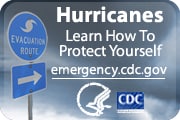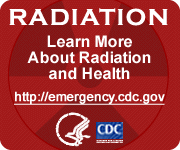New York Chapter 2
Disaster Preparedness Resources
In the last few years we have seen millions of
Americans displaced and suffering because of natural disasters. The
experts all agree that such an event is likely to strike the Northeastern
United States sooner or later. Being prepared for such events is
essential. One reason to be prepared is because it ensures the survival
and relative comfort of your family. The other reason is because it makes
things less chaotic for rescuers and relief crews. If you are able to manage
your life without any help, it frees up rescue teams to handle those who are
truly in need of their help. Should a natural disaster arise, there are many actions that
you can take both before and after the event to ensure your well being and
safety. Hurricanes, floods, ice storms, major snow storms and prolonged
electric loss each create different circumstances that you must address.
In an emergency, there may be major damage to the
infrastructure (roads, power grids, water supply, gas stations) around us. Having your
car fueled and ready to go is not enough if the roads cannot be
traversed. If an alarm is sounded and you are advised to leave, it is
important that you do so immediately, as the roads will get congested
quickly. Have a plan, destination and route in mind. Be sure you
have emergency supplies available for both home and your car. It is nice
to have some cash; with the power out and the telephone system down, ATMs and
credit card machines are not going to work.
You should have an adequate supply of batteries,
flashlights (consider hand-cranked or glow sticks), extra flashlight bulbs, canned foods, a
manual can opener, first aid supplies, seasonal clothing (cool or warm),
blankets, a hand-crank portable radio, walkie-talkies (cell towers may not be
powered), etc. It is recommended that you store these materials in a
cool, secure place inside your home. Having a small piece of luggage or
back pack ("Go Bag") prepared will make your moving that much
easier. Do not forget to safely store your passport, credit cards and
insurance information, and have copies of them in the Go Bag, and to have a
week's supply of any prescription medications available. Most
importantly, all family members should have contact information (preferably
with someone outside the possible disaster area) for after the emergency.
FEMA has more suggestions for preparing a Family
Disaster Supplies Kit, and the New
York City Office of Emergency Management has an excellent brochure
entitled Ready
New York.
If you are going to ride out the emergency at home:
- It is recommended that you have enough water
on hand for one week (2 gallons/person/day) for drinking, cooking, washing and
bathroom use. Fill the bathtubs so that
you can use the water to pour into the toilets to evacuate them. Water
needs to be in the right kind of package. Milk jugs of water start
leaking after a year or so; clear plastic bottles will not. If there
is a natural source of water nearby (river, lake, etc.) you can use it if
you have a way to carry and sterilize the water.
- You need some food. Many people have enough food in the pantry to
handle a couple of days, but for a big disaster you may want a week or two
of food on hand. Canned foods (soup and other prepared foods) and
dried foods (rice, pasta, etc.) are best. Keep in mind that you need a way
to open the cans and cook the food. An old-fashioned can opener and a
camp stove are handy.
- Keep several packages of toilet paper in the back of the bathroom cabinet
just in case.
- For
hurricanes, keeping the windows shut with boards has been found to be more
effective than taping across them. A big tarp and some rope might be
nice things to have in the garage - if the roof gets damaged, you may be
able to cover the hole.
- Anyone who has a disability or is
medically challenged should notify Police in advance so that they are aware
and can help in an emergency.
- If you want to ride out a disaster in style, an emergency generator (and
enough gasoline to keep it running) can be nice to have. With it you can
keep your refrigerator running, provide lights at night and so on.
Having a generator requires an extra level of discipline, because gasoline
goes bad. If you are keeping gasoline in the garage for the generator,
you need to replace it on a regular schedule.
The ICE Campaign: The 'ICE' (In Case of Emergency)
Campaign idea was thought up by a paramedic who found that when he went to the scenes
of accidents, there were always mobile phones with the patients, but they didn't know which number to
call. Yes, there were hundreds of numbers stored, but which one is the contact person in
case of an emergency? All you need to do is
store the number of a contact person or persons who should be
contacted during emergency under the name 'ICE' (In Case Of Emergency). In an emergency situation, Emergency Service personnel and hospital
Staff would be able to quickly contact the right person by simply dialing the
number you have stored as 'ICE.' For more than one contact name simply enter ICE1, ICE2 and ICE3, etc.
Text First. Talk Second. Campaign:
When disasters strike, voice networks can become congested with people trying to
call each other for non-vital communications. This can result in people in
desperate need of help being unable to contact those they need to reach, such as
emergency services, friends or loved ones. In some instances, this may
also result in emergency service personnel being unable to communicate with each
other. In order to raise public awareness around the importance of
utilizing text messaging for non-emergency communications during a disaster Safe
America is recommending the following:
- Get the word out. Let your family and friends know if a natural or
man-made disaster happens in your vicinity, the best way to find out if you
are okay is to first try and contact you via text message and then phone.
- Make sure everyone in your family knows how to use the text messaging
function on their mobile phone and if they don’t, teach them.
Take the time to check travel alerts posted online
before you travel. Travel Alerts for natural disasters, terrorist attacks
and high-profile events such as international conferences or regional sports
events are routinely issued by the State department to inform travelers of
short-term conditions that could pose imminent risk to their security.
Visit www.travel.state.gov for more
information.
Professionals should have their community officials
confidentially know their contact information. Professionals may also
consider joining their local Medical Reserve Corp
(MRC) to make themselves
available and for further training if so inclined. Information for
disaster preparedness for the physician in private practice can be found on
the AAP's Practice
Management Online website (login required). For those involved in
Emergency Department management, the AAP have revised an Emergency
Department Checklist.
Government Organizations in New York:
National:
- Emergency Preparedness and Response
 Hurricanes - Learn more about
hurricane preparedness from this CDC site.
Hurricanes - Learn more about
hurricane preparedness from this CDC site.- Crown Weather Services -
This web site has been the best all-around "go-to" site for
hurricane information in real time. Does not do analysis, but pulls
everything available from all over the web.
-
 Learn more about radiation and health from this CDC site.
Learn more about radiation and health from this CDC site.
|
|
|
|
|
Publications:
The September 2009 issue of the journal Clinical
Pediatric Emergency Medicine is being made available to you
electronically, free-of-charge. The issue is titled "Pediatric
Disaster Readiness" and includes articles drafted by Michael Shannon, MD,
MPH, FAAP and many other AAP member disaster preparedness experts. Much
thanks to Theresa Monturano on
behalf of the publisher Elsevier Inc.
The American Academy of Pediatrics has published "The
Youngest Victims: Disaster Preparedness to Meet Children's Needs" which
provides principles and key messages to guide in the development of public
policies and community and state planning for emergencies.
Medical Organizations and Interests:
-
-
-
Disclaimer: The medical information on the above web pages and their
internal links are the sole responsibility of the designers of those sites.
New York Chapter 2 has not verified the medical data on these sites.
You should use the information from these sources at your own discretion.
Return to
The New York Chapter
2 of the American Academy of Pediatrics
 Hurricanes - Learn more about
hurricane preparedness from this CDC site.
Hurricanes - Learn more about
hurricane preparedness from this CDC site. Learn more about radiation and health from this CDC site.
Learn more about radiation and health from this CDC site.